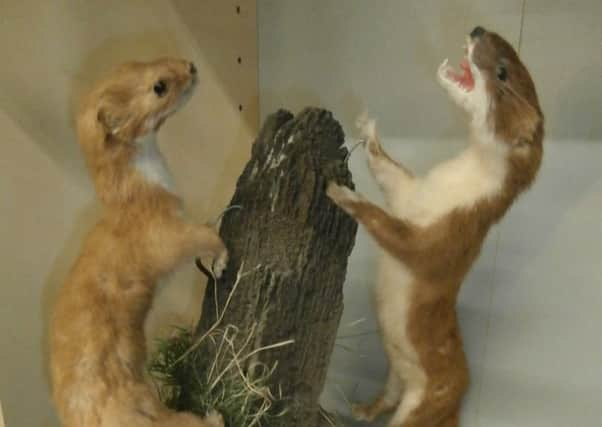Art of taxidermy in the world of antiques


Last week I talked about fields of collecting that, whilst popular, you may think a little bit strange. This week’s subject sits very well in this category, as it is the art of taxidermy.
For thousands of years taxidermy has been a popular hobby and nowadays we see many good pieces of taxidermy for sale in the centre. Some people see taxidermy as distasteful or old fashioned and a hobby of a bygone age, but nothing could be further from the truth. You only have to visit a historic house or look in museums and art galleries to see just how important taxidermy is. Nowadays many modern sculptures are crafted with some sort of taxidermy skills.
Advertisement
Hide AdAdvertisement
Hide AdTaxidermy is described as the art of preparing, stuffing and mounting the skins of dead animals. It is a very old pastime, which dates back to the 18th century. However, it was in the Victorian era when people had a genuine (and increasing) interest in animals and biology, that the art of taxidermy became really popular. Travel was becoming easier and talk had started about animal preservation and conservation.
Nowadays there are about 3,000 practising taxidermists in the UK.
Some stuffed animals are made purely for aesthetic pleasure, whist others are prepared to be used as a study piece. Taxidermy did not start as a cold blooded way of displaying dead animals like trophies but more a significant method of research and to aid our understanding of different species.
The trophy aspect of taxidermy was only popular in late Victorian times.
Advertisement
Hide AdAdvertisement
Hide AdTaxidermy, when done correctly, is a real art. The skin of the dead animal is cleaned, preserved, and then stretched over a wire frame. The animal will be a perfect reproduction of its form when it was alive, which is why accurate items are so highly regarded for study as well for exhibitions.
It can be difficult to value a piece.
It’s a bit like a work of art – it depends on the quality of the work and the name of the producer of the piece.
Society’s attitude towards animals has changed beyond words in the last century and one would hope that the next generation look after the millions of skins and mounts, which have been carefully preserved by taxidermists, as they remain an essential resource for future generations of zoologists.